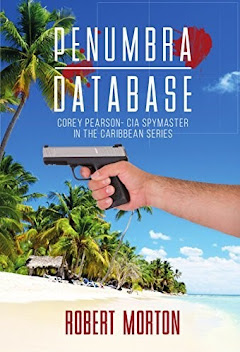 |
| Cold War spy gadgets vs modern espionage tools—same mission, evolved methods |
It
started with a nickel. In 1953, a Brooklyn paperboy dropped a coin that cracked
open on the pavement—and out slipped a microfilm stuffed with secret codes. The
discovery blew the lid off a Soviet spy ring and confirmed what every CIA
operative already knew: in the Cold War, nothing was ever what it seemed.
Back then, espionage was a hands-on art.
Agents carried secrets in their pockets, hid messages in their clothes, and
built entire lives on lies that could vanish with a match. Invisible ink was
old news; the real game was concealment. The CIA’s Office of Technical Services
had a lab that could turn anything into a spy’s best friend—pipes, books,
shaving brushes, even Monopoly boards. Craftsmen worked like magicians,
hollowing out heel compartments in shoes, hiding silk escape maps between
playing cards, and stitching compasses into coat buttons. You could walk
through customs with a spy radio in your pipe or trade a rigged bottle of wine
containing blueprints to a contact at a party, and no one would be the wiser.
One of the cleverest tricks was the “dead
drop”—messages hidden in everyday items left in public spots so agents never
had to meet. Sometimes it was a hollow brick, sometimes a rotting animal
carcass stuffed with film and hot-sauced to keep stray cats from batting it
around. Primitive, sure—but brutally effective. It was the perfect symbol of
Cold War espionage: dirty, ingenious, and invisible.
The line between survival and capture
often came down to a gadget small enough to fit in your hand. A pipe that could
burn a message in seconds. A fountain pen that held a tiny compass in its tip.
A false shaving brush hiding a roll of microfilm. Even the infamous “false
scrotum”—a rubber decoy concealing a miniature escape radio—proved that
innovation knew no shame when national security was on the line.
But spycraft didn’t die when the Berlin
Wall fell. It just went digital.
In the modern-day world of espionage, deception has evolved—but the principles
haven’t changed. That’s the thread running through my spy thriller PAYBACK,
where CIA spymaster Corey Pearson and his elite team face an assassin who
bleeds secrets back to Moscow. The tools they use may look nothing like those
of the Cold War, but the ingenuity behind them is cut from the same cloth.
In this spy thriller, we uncover how
modern CIA operatives operate in near-total secrecy, using air-gapped
laptops—sealed machines with no ports or internet access. These isolated
systems function like digital bomb shelters, perfect for quietly decrypting
stolen drives without leaving a trace. Encrypted satellite feeds are beamed
directly to Fort Meade, where intelligence analysts like Stacie, a covert CIA
plant deep inside the NSA, process real-time facial recognition. She pores over
airport security footage and thermal imaging overlays, tracking high-value
targets who believe they’ve disappeared.
Out in the field, agents deploy
hummingbird-sized micro-drones to scan rooftops and alleyways, while subdermal
trackers ensure even captured operatives stay on the grid. Every call and
whisper is cloaked beneath layers of digital camouflage—voice scramblers, proxy
rerouting, and dark-net firewalls strong enough to baffle the best Cold War
codebreakers.
These tools may sound like science
fiction, but they’re grounded in the same survival instinct that built the
CIA’s first concealment labs. The only difference is the battlefield. Where
spies once hid silk maps in card decks, today they hide malware in phone apps.
Where a hollow coin once held a secret microdot, now a terabyte of stolen intel
can live invisibly in the cloud. Yet
whether it’s a nickel on a Brooklyn sidewalk or an encrypted thumb drive in a
Zurich safehouse, the goal remains the same—hide, deceive, outthink.
In PAYBACK, Corey
Pearson’s team bridges that gap between eras: field operatives who blend Cold
War cunning with modern-day tech. They still rely on instincts—on the feel of
danger, the weight of silence, the art of the bluff. Because even in a world of
satellites and AI, no gadget replaces the human element. The spy’s greatest
weapon has always been his ability to disappear while standing in plain sight.
Looking back at those relics—the rigged
Monopoly boards, the cigarette lighters that held transmitters, the boots with
map-filled heels—you can’t help but feel a little awe. Each one tells the same
story: human creativity in the service of survival. Today’s agents might trade
their false-bottom pipes for encrypted uplinks, but the essence of espionage
hasn’t changed.
The technology may have evolved, but the
mission remains timeless—stay unseen, stay ahead, and trust nothing but your
instincts.
Because whether it’s 1962 or 2025, in the
shadows, the game never really changes.
Robert
Morton is a member of the Association of Former Intelligence
Officers (AFIO) and writes about the U.S. Intelligence Community (IC). He also
writes the Corey
Pearson- CIA Spymaster Series, which blends his knowledge
of real-life intelligence operations with gripping fictional storytelling. His
thrillers reveal the shadowy world of covert missions and betrayal with
striking realism.






No comments:
Post a Comment